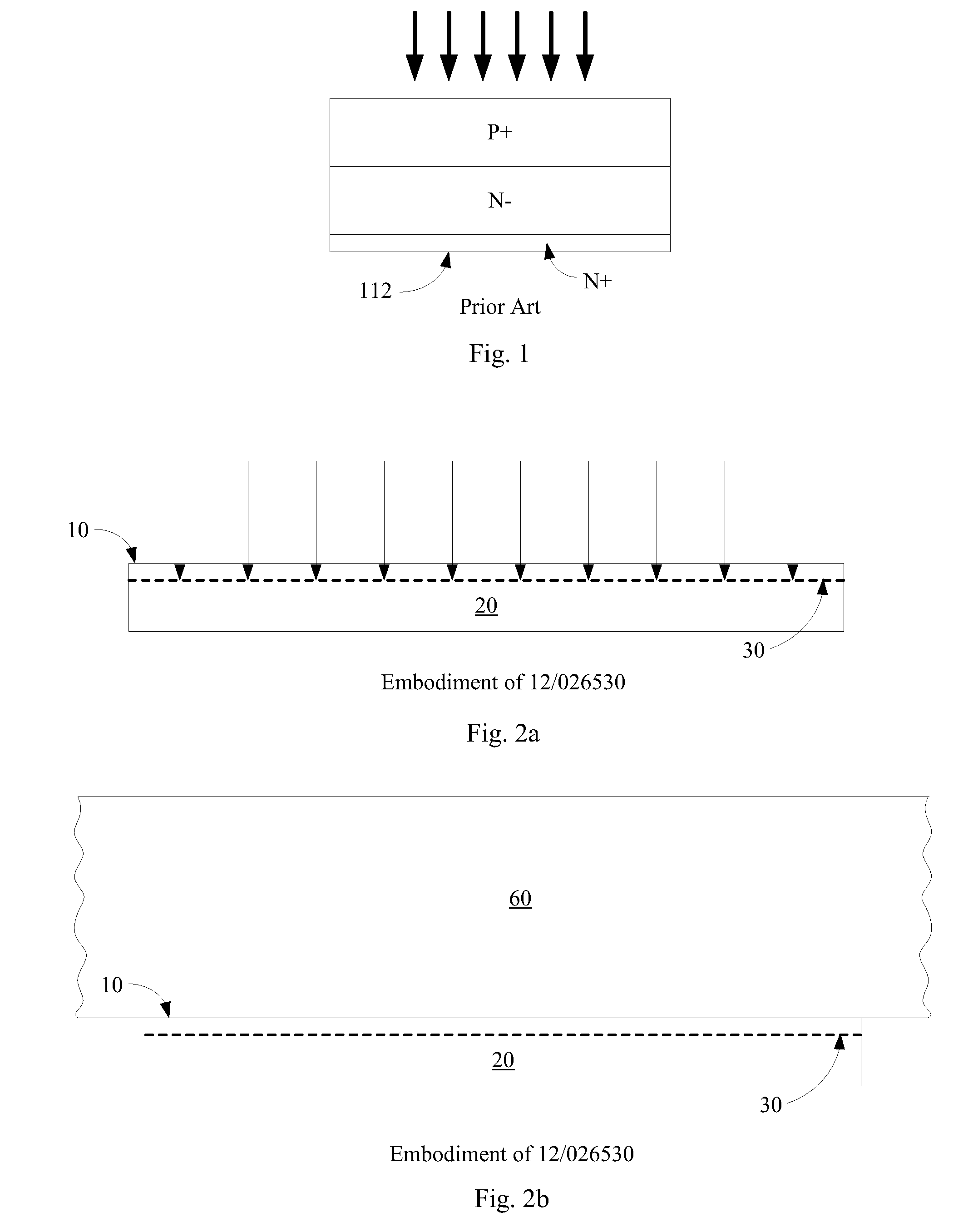Back-contact photovoltaic cell comprising a thin lamina having a superstrate receiver element
- Summary
- Abstract
- Description
- Claims
- Application Information
AI Technical Summary
Benefits of technology
Problems solved by technology
Method used
Image
Examples
example
Amorphous Doped Regions
[0052]In an alternative low-temperature embodiment, heavily doped n-type and p-type regions are formed at the back surface of the lamina by depositing heavily doped amorphous silicon. Turning to FIG. 7a, fabrication proceeds as in prior embodiments to the point at which lamina 40, already bonded to receiver element 60, is cleaved from the donor wafer, creating second surface 62. Heavily doped n-type region 14 was previously formed at first surface 10. In this example, lamina 40 is lightly n-doped. FIG. 7a shows receiver element 60 on the bottom, as during fabrication. As in prior embodiments, second surface 62 is optionally textured and treated to remove damage.
[0053]Next a thin layer 72 of intrinsic amorphous silicon may be deposited. This layer serves to passivate second surface 62, and should be thin, for example 50 angstroms or less, for example about 15, 20, or 30 angstroms. In some embodiments, amorphous intrinsic layer 72 may be omitted.
[0054]A layer 74...
PUM
 Login to View More
Login to View More Abstract
Description
Claims
Application Information
 Login to View More
Login to View More - R&D
- Intellectual Property
- Life Sciences
- Materials
- Tech Scout
- Unparalleled Data Quality
- Higher Quality Content
- 60% Fewer Hallucinations
Browse by: Latest US Patents, China's latest patents, Technical Efficacy Thesaurus, Application Domain, Technology Topic, Popular Technical Reports.
© 2025 PatSnap. All rights reserved.Legal|Privacy policy|Modern Slavery Act Transparency Statement|Sitemap|About US| Contact US: help@patsnap.com



